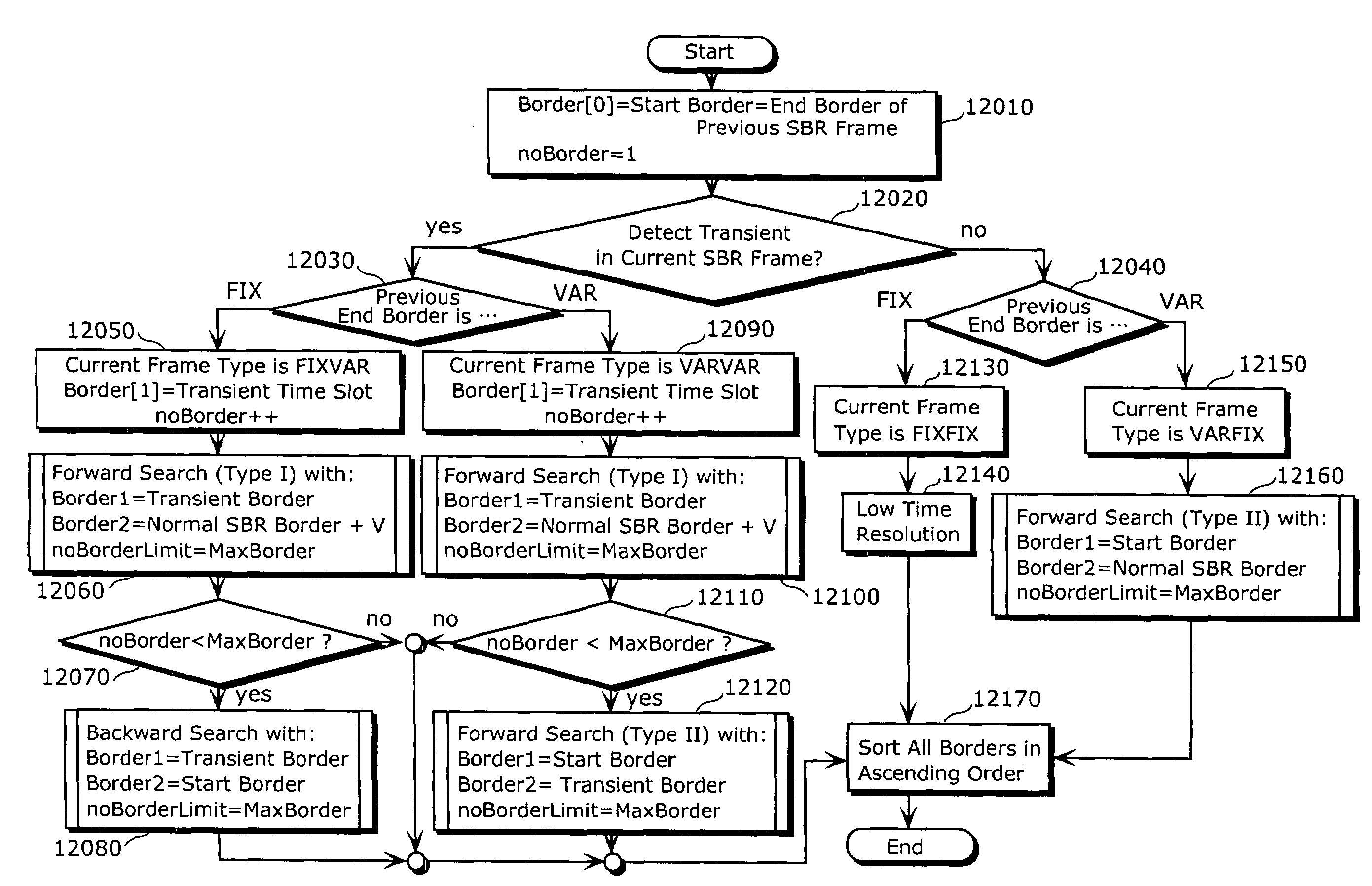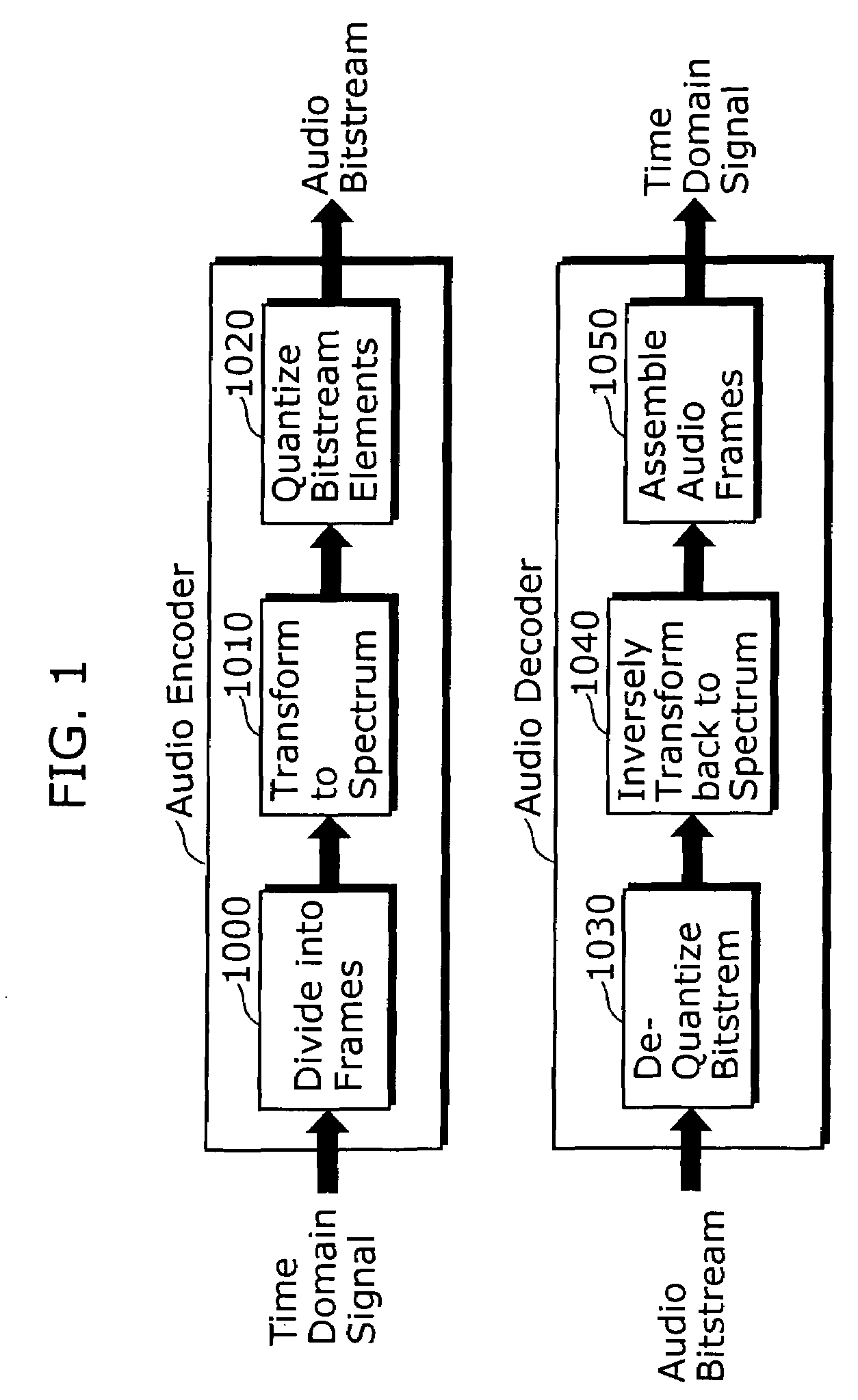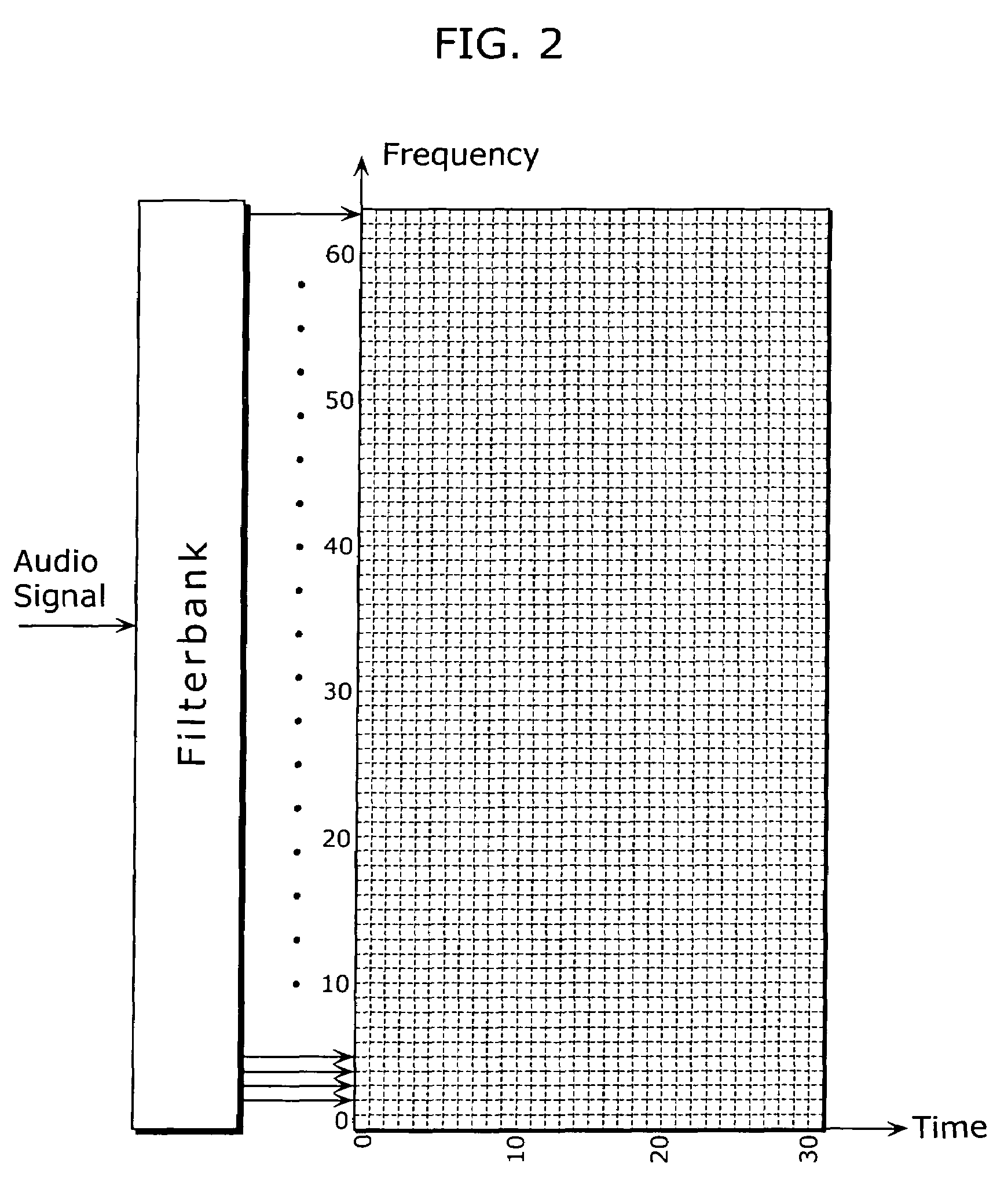Method for determining time borders and frequency resolutions for spectral envelope coding
a technology of applied in the field of systematic segmentation methods for determining time borders and frequency resolutions of bandwidth expansion technologies, can solve problems such as insufficient methods, and achieve the effect of good sound quality, easy implementation of strategies, and good sound quality
- Summary
- Abstract
- Description
- Claims
- Application Information
AI Technical Summary
Benefits of technology
Problems solved by technology
Method used
Image
Examples
Embodiment Construction
[0047]The following method is one example of the above-described SBR technology. However, many modifications are possible in the exemplary embodiment utilizing the spectral envelope coding based on the time / frequency grid.
3.5.1 Determination of Time Borders
[0048]The embodiment for the determination of time borders is presented as a series of diagrams shown in FIGS. 13 to 17.
3.5.1.1 Overview
[0049]FIG. 13 is a diagram showing an overall flowchart of a time border determination unit of the present invention. FIG. 13 shows an overview of an overall time border determination operation. 12010 sets a first border ‘border[0]’ to the end border of the previous SBR frame. It also initializes a border counter ‘noBorder’ to 1. 12020 activates a transient detector for the current frame, to check for the most drastic transient behaviour from border[0] to (next nominal SBR border+V), where V is the amount of transgression into the next SBR frame allowed by the syntax.
[0050]If a transient is found,...
PUM
 Login to View More
Login to View More Abstract
Description
Claims
Application Information
 Login to View More
Login to View More - R&D
- Intellectual Property
- Life Sciences
- Materials
- Tech Scout
- Unparalleled Data Quality
- Higher Quality Content
- 60% Fewer Hallucinations
Browse by: Latest US Patents, China's latest patents, Technical Efficacy Thesaurus, Application Domain, Technology Topic, Popular Technical Reports.
© 2025 PatSnap. All rights reserved.Legal|Privacy policy|Modern Slavery Act Transparency Statement|Sitemap|About US| Contact US: help@patsnap.com



